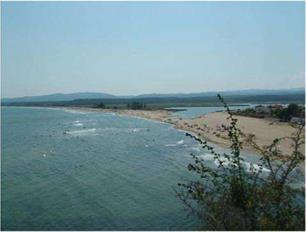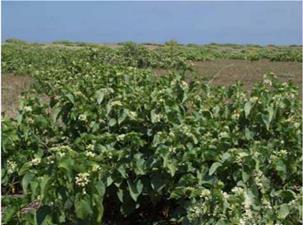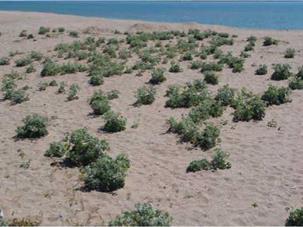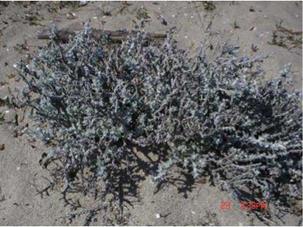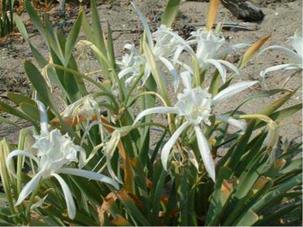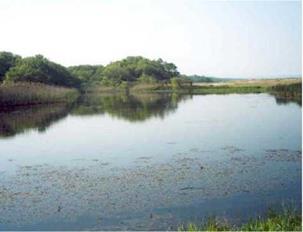The Igneada Longos Forests National Park, located on the Black Sea coast 15 km from the Turkish-Bulgarian border, is positioned between the northern latitudes 41′ 44′ 43′ and 41′ 58′ 27′ and the eastern longitudes 27′ 44′ 52′ and 28′ 3′ 17′.The Igneada area includes different kinds of ecosystems (sand dunes, wetlands, longos (flooded alluvial) forests, deciduous forests, and many streams) and a wide range of biodiversity; these characteristics make it one of the most important areas in Turkey (Ozyavuz, et al., 2006) (Table. Igneada and the surrounding environment have unique characteristics; these types (Igneada Longos Forests) of wild forest in other parts of Turkey and in Europe have been damaged due to anthropogenic effects (Figure 4).
|
|
Fig. 4. General view of this area.
Typically, flooded alluvial forests have high biological diversity, high productivity, and high habitat dynamism (Hughes et al., 2003). The surface area of these forests is around 3000 ha. Igneada alluvial longos forests are part of the Istranca forests; they are indeed ”natural treasures” that have been formed by several ecosystems over thousands of years (Ozyavuz and Yazgan, 2010).
|
Resource Value |
Area (ha.) |
Main Characteristic |
|
Longos forest |
1400 |
Alluvial flooded forest, rarity, sensitivity, flora, fauna |
|
Wetlands and marshes |
Wetlands (lagoon lake 52) (other 28) Marshes (315) |
Geomorphological structure, flora, fauna, |
|
Sand dunes |
131 |
Geomorphological structure, flora (especially endemic plants) |
|
Streams |
– |
Naturalness, flora |
|
Deciduous forests |
– |
Naturalness, plant diversity, fauna |
|
Table 4. Resource values of Igneda Longos forests National Park. |
There are five lakes in the area. Lake Erikli Lagoon (43 ha) is adjacent to the northern part of I gneada subdistrict, which is not linked with the sea during the summer period. Lake Mert (266 ha) is located at the southern part of the subdistrict, where the stream reaches the Black Sea. Lake Saka, which is the smallest (5 ha), is at the southernmost part of the study area between the forest and sand. Lake Hamam (19 ha) and Lake Pedina (10 ha) are located in the inner part. The coastal dunes and the longos forests of Igneada constitute the most sensitive ecosystem in the study area. Most of the known endemic plants (Silene sangaria, Crepis macropus, Centaurea kilaea) in Igneada and its vicinity are found in the coastal dunes; other species found here, though not endemics, are of national and international concern (Aurinia uechtritziana, Cakile maritima, Cionura erecta, Crambe maritima, Cyperus capitatus, Elymus elongatus subsp. elongatu, Eryngium maritimum, Euphorbia peplis, Eu. paralias, Jurinea kilae, Leymus racemosus, Otanthus maritimus, Pancratimum maritimum, Peucedanum obtusifolium, Stachys maritima) (Figure 5-10) (Ozyavuz and Yazgan, 2010).
|
|
Fig. 5. Cianura erecta.
|
|
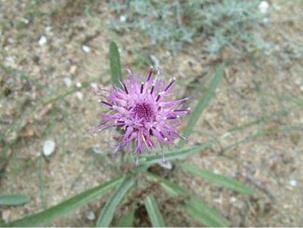
|
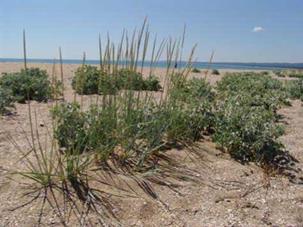
|
|
Fig. 9. Otanthus maritimus.
|
|
Fig. 10. Pancratimum maritimum.
There are three longos forests in the area. The conserved natural longos forests in the study area are the Lake Mert longos (316 ha), Lake Erikli longos (456 ha), and Lake Saka longos (624 ha) forests (Figure 11-13) This type of ecosystem is unique and rare in Turkey and the world because these ecosystems are sensitive to environmental conditions. In general, deciduous mixed forest vegetation is found in the area outside of the longos forests, and in this area the forests have similar floristic composition to the longos forests. However, slopes are rather steep in the area where these forests are found, and therefore the water table is well below the surface. The different ecosystems in the area provide a diverse living environment for the fauna in the region. Nearly half (194) of the 454 bird species constituting the bird diversity of Turkey are seen in this area during the year (Ozyavuz and Yazgan, 2010).
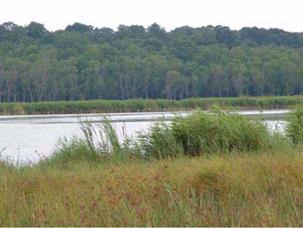
|
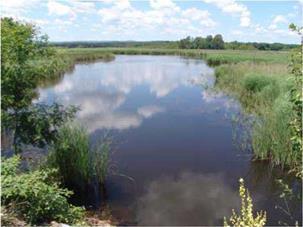
|
|
Fig. 13. Lake Saka.
2. References
Dudley, N. (Editor) (2008). Guidelines for Applying Protected Area Management Categories, International Union for Conservation of Nature and Natural Resources, 86 pp., ISBN 978-2-8317-1086-0, Gland, Switzerland.
Guglu, K., Karahan, F. (2004). A review: the history of conservation programs and development of the national parks concept in Turkey, Biodiversity and Conservation 13: 1373-1390, 2004.
IUCN (1994). Guidelines for Protected Area Management Categories, IUCN Commission on National Parks and Protected Areas with the assistance of the World Conservation Monitoring Centre, pp. 5-7, ISBN 2-8317-0201-1, Switzerland and Cambridge, UK.
IUCN (2000). Indigenous and Traditional Peoples and Protected Areas, IUCN, Gland, Switzerland and Cambridge, UK.
IUCN (2001). Guidelines for Financing Protected Areas in East Asia, World Commission on Protected Areas (WCPA), IUCN, Gland, Switzerland, and Cambridge, UK.
IUCN (2003). Guidelines for Management Planning of Protected Areas, IUCN, Gland, Switzerland and Cambridge, UK.
Ministry of Environment (2001). The National Strategy and Action Plan for Biodiversity in Turkey".
Ministry of Environment (2002). National Report on Sustainable Development 2002, Ministry of Republic of Turkey.
Ozyavuz, M. and Yazgan, M. 2010. Planning of Igneada Longos (Flooded) Forests as a Biosphere Reserve, Journal of Coastal Research, (26)6:1104-1111.
Weeks, P. and Mehta, S. (2004). Managing People and Landscapes: IUCN’s Protected Area Categories, J. Hum. Ecol, (16) 4: 253-263.
Yucel M. (1995). Protected Areas and Planning. Publication No. 104, C, ukurova University Press, Adana, Turkey, 255 pp. (in Turkish).
2

